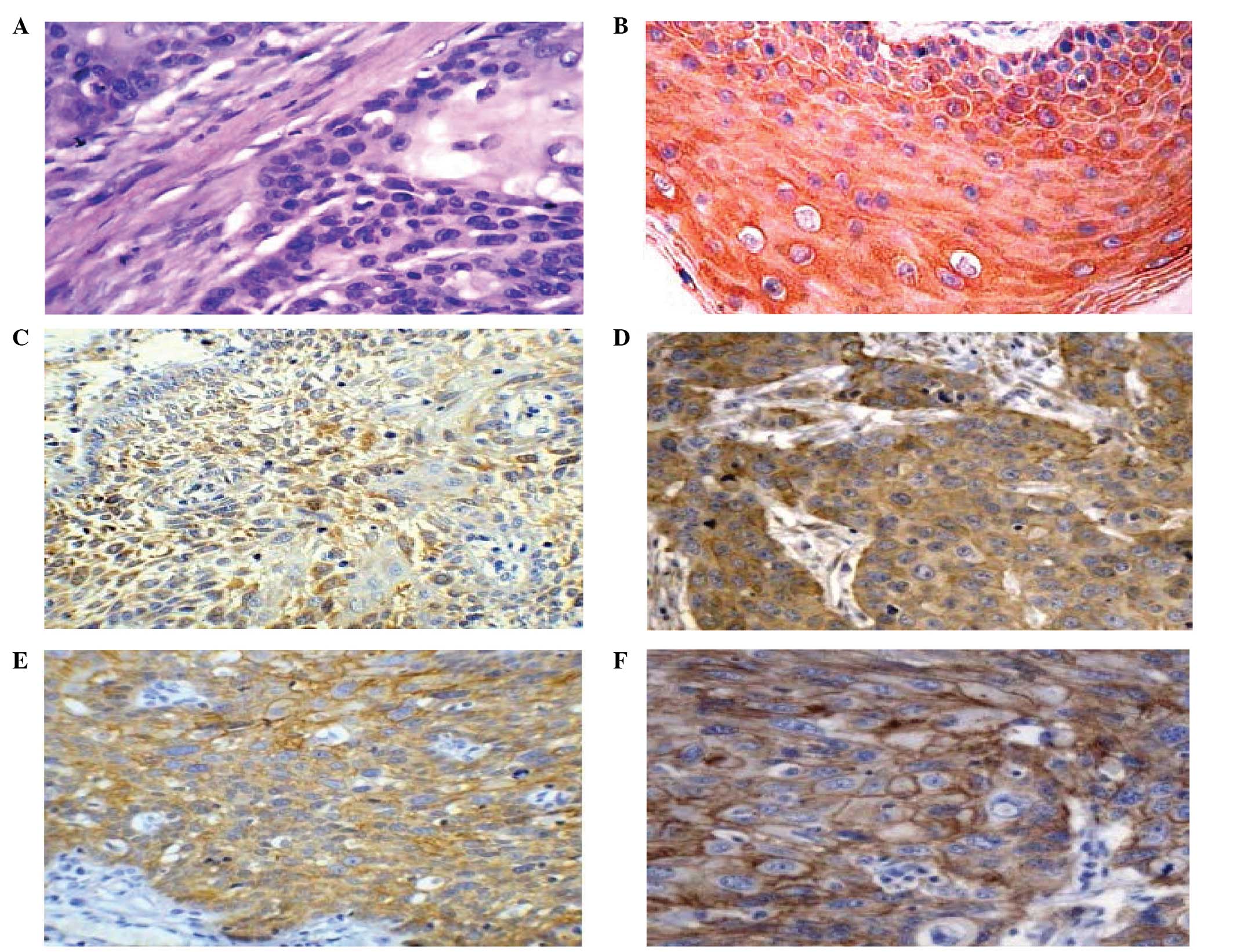|
1
|
Deiss LP, Feinstein E, Berissi H, Cohen O
and Kimchi A: Identification of a novel serine/threonine kinase and
a novel 15-kD protein as potential mediators of the gamma
interferon-induced cell death. Genes Dev. 9:15–30. 1995.
|
|
2
|
Brabender J, Arbab D, Huan X, Vallböhmer
D, Grimminger P, Ling F, Neiss S, Bollschweiler E, Schneider PM,
Hölscher AH and Metzger R: Death-associated protein kinase (DAPK)
promoter Methylation and response to neoadjuvant radiochemotherapy
in esophageal cancer. Ann Surg Oncol. 16:1378–1383. 2009.
|
|
3
|
Tong A, Lynn G, Ngo V, Wong D, Moseley SL,
Ewbank JJ, Goncharov A, Wu YC, Pujol N and Chisholm AD: Negative
regulation of Caenorhabditis elegans epidermal damage
responses by death-associated protein kinase. Proc Natl Acad Sci
USA. 106:1457–1461. 2009.
|
|
4
|
Li H, Ray G, Yoo BH, Erdogan M and Rosen
KV: Down-regulation of death-associated protein kinase-2 is
required for beta-catenin-induced anoikis resistance of malignant
epithelial cells. Biol Chem. 284:2012–2022. 2009.
|
|
5
|
McClatchey AI: Merlin and ERM proteins:
unappreciated roles in cancer development? Nat Rev Cancer.
3:877–883. 2003.
|
|
6
|
Zhai J, Yang X, Zhang Y, Qi Q, Hu J and
Wang Q: Reduced expression levels of the death-associated protein
kinase and E-cadherin are correlated with the development of
esophageal squamous cell carcinoma. Experimental And Therapeutic
Med. 5:972–976. 2013.
|
|
7
|
Mathew J, Hines JE, Obafunwa JO, Burr AW,
Toole K and Burt AD: CD44 is expressed in hepatocellular carcinomas
showing vascular invasion. J Pathol. 179:74–79. 1996.
|
|
8
|
Gonzalez MA, Pinder SE, Wencyk PM, Bell
JA, Elston CW, Nicholson RI, Robertson JF, Blamey RW and Ellis IO:
An immunohistochemical examination of the expression of E-cadherin,
alpha- and beta/gamma-catenins, and alpha2- and betal-integrins in
invasive breast cancer. J Pathol. 187:523–529. 1999.
|
|
9
|
Cavallaro U and Christofori G:
Multitasking in tumor progression: signaling function of cell
adhension molecules. Ann NY Acad Sci. 1014:58–66. 2004.
|
|
10
|
Bajbouj K, Poehlmann A, Kuester D, Drewes
T, Haase K, Hartig R, Teller A, Kliche S, Walluscheck D, Ivanovska
J, Chakilam S, Ulitzsch A, Bommhardt U, Leverkus M, Roessner A and
Schneider-Stock R: Identification of phosphorylated p38 as a novel
DAPK-interacting partner during TNFalpha-induced apoptosis in
colorectal tumor cells. Am J Pathol. 175:557–570. 2009.
|
|
11
|
Zalckvar E, Berissi H, Eisenstein M and
Kimchi A: Phosphorylation of Beclin 1 by DAP-kinase promotes
autophagy by weakening its interactions with Bcl-2 and Bcl-XL.
Autophagy. 5:720–722. 2009.
|
|
12
|
Hoffmann AC, Vallböhmer D, Prenzel K,
Metzger R, Heitmann M, Neiss S, Ling F, Hölscher AH, Schneider PM
and Brabender J: Methylated DAPK and APC promoter DNA detection in
peripheral blood is significantly associated with apparent residual
tumor and outcome. J Cancer Res Clin Oncol. 135:1231–1237.
2009.
|
|
13
|
Fendri A, Masmoudi A, Khabir A,
Sellami-Boudawara T, Daoud J, Frikha M, Ghorbel A, Gargouri A and
Mokdad-Gargouri R: Inactivation of RASSF1A, RARbeta2 and DAP-kinase
by promoter methylation correlates with lymph node metastasis in
nasopharyngeal carcinoma. Cancer Biol Ther. 8:444–451. 2009.
|
|
14
|
Akisawa N, Nishimori I, Iwamura T, Onishi
S and Hollingsworth MA: High levels of ezrin expressed by human
pancreatic adenocarcinoma cell lines with high metastatic potentia.
Biochem Biophys Res Commun. 258:395–400. 1999.
|
|
15
|
Makitie T, Carpén O, Vaheri A and Kivelä
T: Ezrin as a prognostic indicator and its relationship to tumor
characteristics in uveal malignant melanoma. Invest Ophthalmol Vis
Sci. 42:2442–2449. 2001.
|
|
16
|
Santos-García A, Abad-Hernández MM,
Fonseca-Sánchez E, Julián-González R, Galindo-Villardón P,
Cruz-Hernández JJ and Bullón-Sopelana A: E-cadherin, laminin and
collagen IV expression in the evolution from dysplasia to oral
squamous cell carcinoma. Med Oral Patol Oral Cir Bucal.
11:E100–E105. 2006.
|
|
17
|
Zhai JW, Yang XG, Yang FS, Hu JG and Hua
WX: Expression and clinical significance of Ezrin and E-cadherin in
esophageal squamous cell carcinoma. Chin J Cancer. 29:317–320.
2010.
|
|
18
|
Moilanen J, Lassus H, Leminen A, Vaheri A,
Bützow R and Carpén O: Ezrin immunoreactivity in relation to
survival in serous ovarian carcinoma patients. Gynecol oncol.
90:273–281. 2003.
|















